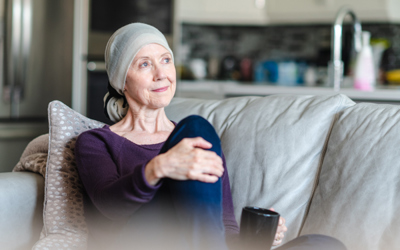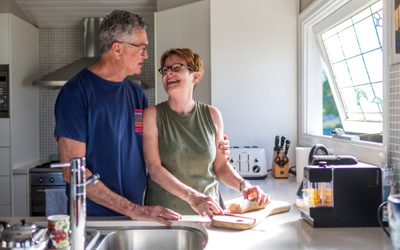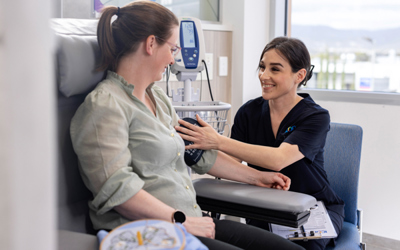Quick facts about breast cancer
Breast cancer is the most common cancer in the UK with 1 woman diagnosed every 10 minutes
Around 55,000 women and 400 men are diagnosed with breast cancer every year in the UK. In England, every year around 46,000 people are diagnosed with breast cancer. 1 in 7 women in the UK will develop breast cancer in their lifetime*
Almost 9 in 10 (86%) of women survive breast cancer for 5 years or more
Breast cancer survival is improving and has doubled in the past 50 years in the UK due to a combination of improvements in treatment and care, earlier detection through screening and a focus on targets, including faster diagnosis.
Types of breast cancer
There are many different types of breast cancer, some of which are common, while others are very rare.
Some of these include:
-
Invasive ductal carcinoma (IDC)
Invasive Ductal Carcinoma is the most common type of breast cancer. Invasive means that the cancer has begun to invade breast tissue close to where it originated. In the case of IDC, the cancer began in the milk duct and has now spread through the duct wall to other breast tissue.
-
Invasive lobular carcinoma (ILC)
Rather than beginning in the milk duct, Invasive Lobular Carcinoma originates in the milk glands (known as lobules) and invades nearby areas of the breast.
-
Inflammatory breast cancer (IBC)
Unlike other types of breast cancer, Inflammatory Breast Cancer does not involve a lump in the breast. Instead, the skin of the breast may become red, inflamed, thick or pitted (like an orange), your nipple may become inverted, and the breast may become swollen, hard, tender and painful, or itchy. IBC is a rare type of breast cancer and is more likely to be advanced upon diagnosis, as it is difficult to identify using a mammogram.
Signs and symptoms of breast cancer
Breast tissue can typically feel lumpy, which can make it difficult to know what is normal and what could be a sign of breast cancer. This is why it’s important to perform regular self-examinations and see your GP or healthcare professional if you notice any of the symptoms below. Discussing anything concerning with your doctor as soon as possible can help give you peace of mind and offer the best chance of successful treatment if you receive a breast cancer diagnosis.
Some common symptoms to look out for include:

Changes in the size or shape of your breast

Any new lumps in the breast or under your arm

Discharge or fluid (other than breast milk) from the nipple, including blood

Dimpling or a ‘pulling’ of the skin on your breast

Breast pain or swelling

Dry, flaky red skin around the nipple area
Stages of breast cancer
The TNM system is used to stage breast cancer, and it helps doctors understand what your cancer looks like. The TNM stands for:
Tumour - the depth of invasion through bladder wall
Node - is a measure of whether lymph nodes have been affected
Metastasis - the degree to which the cancer has spread to other organs of the body
The TNM information, along with other tests, helps determine the stage of your breast cancer using the guidelines below.
-
Stage I
Cancer in breast tissue. Tumour is less than 2cm across in size
-
Stage II
Cancer in breast tissue. Tumour is less than 5cm in size. Cancer may spread to the axillary lymph node
-
Stage III
Tumour is larger than 5cm across in size and cancer has spread to axillary lymph nodes. Possible dimpling, inflammation or skin colour change
-
Stage IV
Cancer has spread beyond the breast to other nearby areas of the body
Treatment for breast cancer
There are many different types of treatment for breast cancer. Your treatment will depend on you and your cancer.




